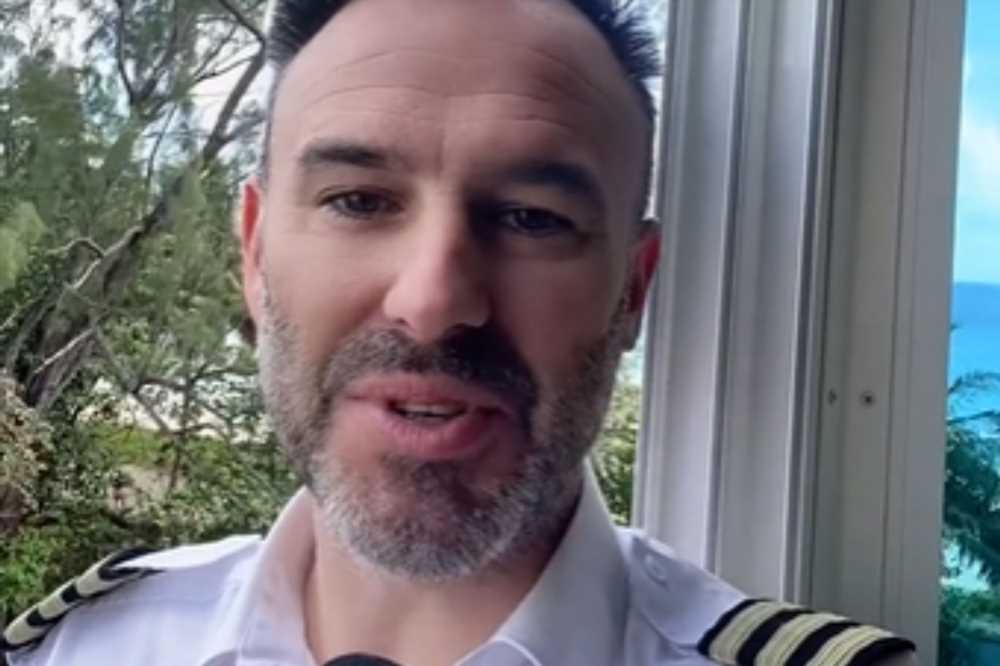THERE are moments on a flight when passengers have to keep their seatbelts done up, including during takeoff and landing.
And, once the plane is in the sky, it always takes a while for pilots to turn the seatbelt sign off and allow the people on board to get up and move about the plane.
This may seem like a power move, keeping people strapped in as long as possible, but there's a good reason for it.
Pilot and Tiktoker Simon (@flyman_simon) explained exactly why you have to stay in your seats for a little while, even after the plane has safely taken off.
He was asked: "Can turbulence be avoided? If so, why don't pilots avoid it?"
He responded with a video explaining exactly why seatbelts need to be fastened more than passengers might assume.
Read More on Pilots

I'm a pilot – here's what really happens in the cockpit when an engine fails

I'm a pilot – passengers think we rely on autopilot but they're wrong
Simon said: "Firstly, it isn't dangerous if you've got your seatbelt fastened, so always have that loosely fastened.
"Two, it's often easy to forecast it and we can avoid it, and we do that as much as possible.
"There's a couple of instances where it's a little bit hard to avoid it, or it may even be beneficial. Let me explain.
"So when we take off, we have to fly through clouds. They'll be full of thermals, energy and wind, changing speed and direction.
Most read in News Travel

Little-known no-photo zone at airports that gets passengers into trouble

Unique European islands anyone can move to with rainbow huts and polar bears

Why you should never have a hot shower after your flight

Tourists baffled to find hostel inside an Ikea …it’s ‘like Night At the Museum’
"When that goes over the wing and we fly through it, it causes a little bit of turbulence, which is why we leave the seatbelt signs on till at least 10,000ft, or until we're clear of most of the cloud."
Simon also revealed that pilots will even go looking for turbulence in some instances because it can increase the speed of their planes.
This happens in jet streams, which are fast-flowing, narrow air currents found in the atmosphere at high altitudes.
They can propel planes to even quicker speeds, making journeys shorter and saving money on fuel.
However, they can also make things a little bit bumpy.
Simon continued: "When we're cruising, we want to get into a jet stream, which is a column of air up to 200 miles an hour.
"If we can get that behind us, then it increases the aircraft speed over the ground, reduces the fuel use and it gets you to your destination faster, which is when we put the seatbelt signs on.
"When we're changing from slow moving air to fast moving air, we can get a bit of turbulence. But it's all to our benefit."
Simon's advice made several people feel more at ease about the prospect of encountering turbulence during their flights.
One wrote: "I didn’t know this! It’s actually a good thing."
Another said: "This has actually made me feel a bit better."
A third added: "I’m a fearful flyer and don’t like turbulence at all. Listening to you makes me feel at ease."
However, others were less convinced, with one saying: "No kind of turbulence is to my benefit, I can't agree."
Other things that passengers may deem to be dangerous can also be beneficial, including a bumpy landing.
Pilot Eser Aksan E told Sun Online Travel that pilots prefer a firm landing, especially when it's raining or the runway is wet and slippery.
She said that, in order to have a really soft landing, pilots will have to float over the runway for a long time, before touching down gently.
However, they prefer to land as quickly as possible, giving them more space to bring the aircraft to a standstill.
She said: "You only have a certain amount of runway to land on and if you just keep floating, you're going to end up without any runway after a while and a shorter distance to stop.
"It should be firm and it should be immediate. That way you have a good distance to stop, so if you make other mistakes, you have a pretty good amount of runway still left."
Meanwhile, this pilot revealed all the complicated decisions they have to make whenever they fly through a storm.
And another pilot explained how they keep the plane in the air during a flight.
Source: Read Full Article


